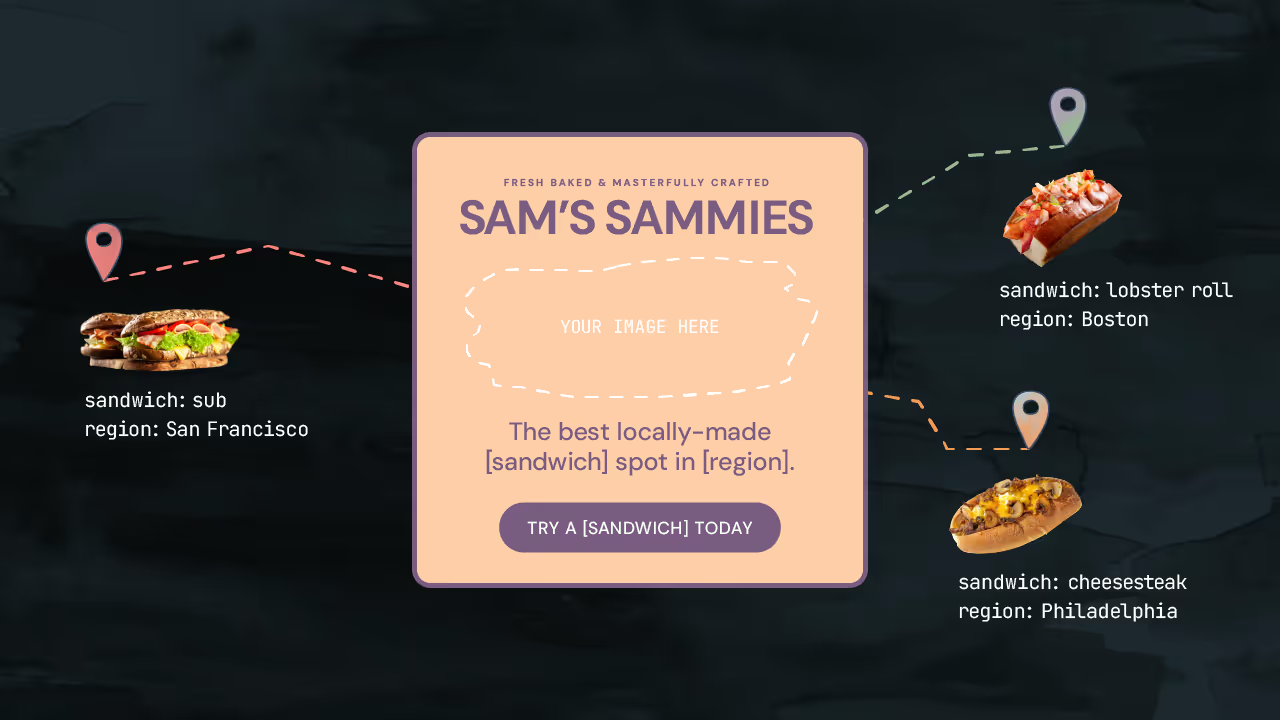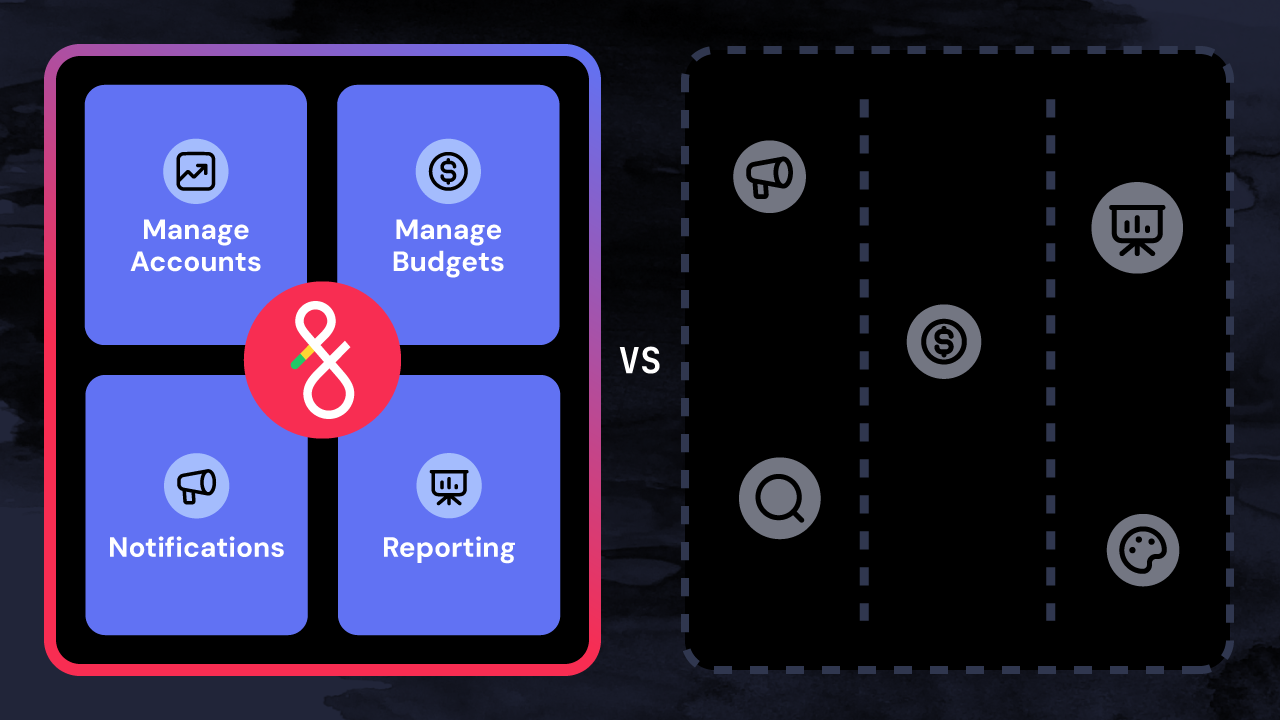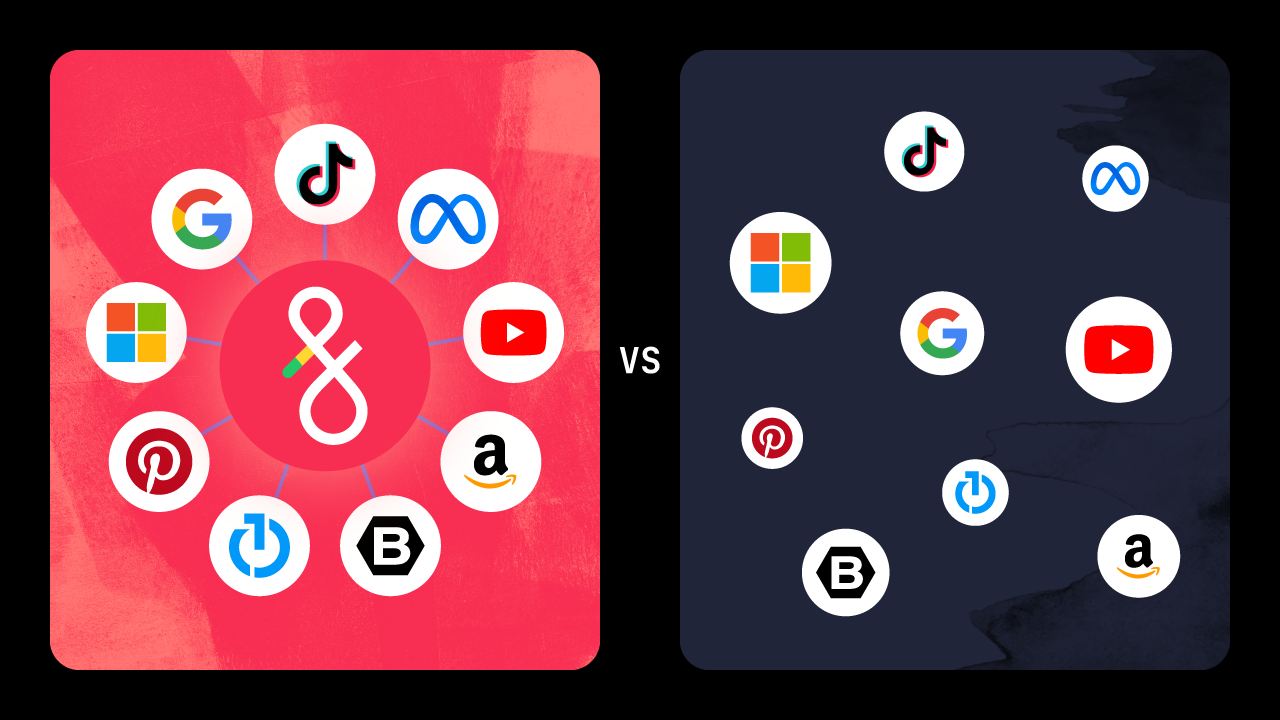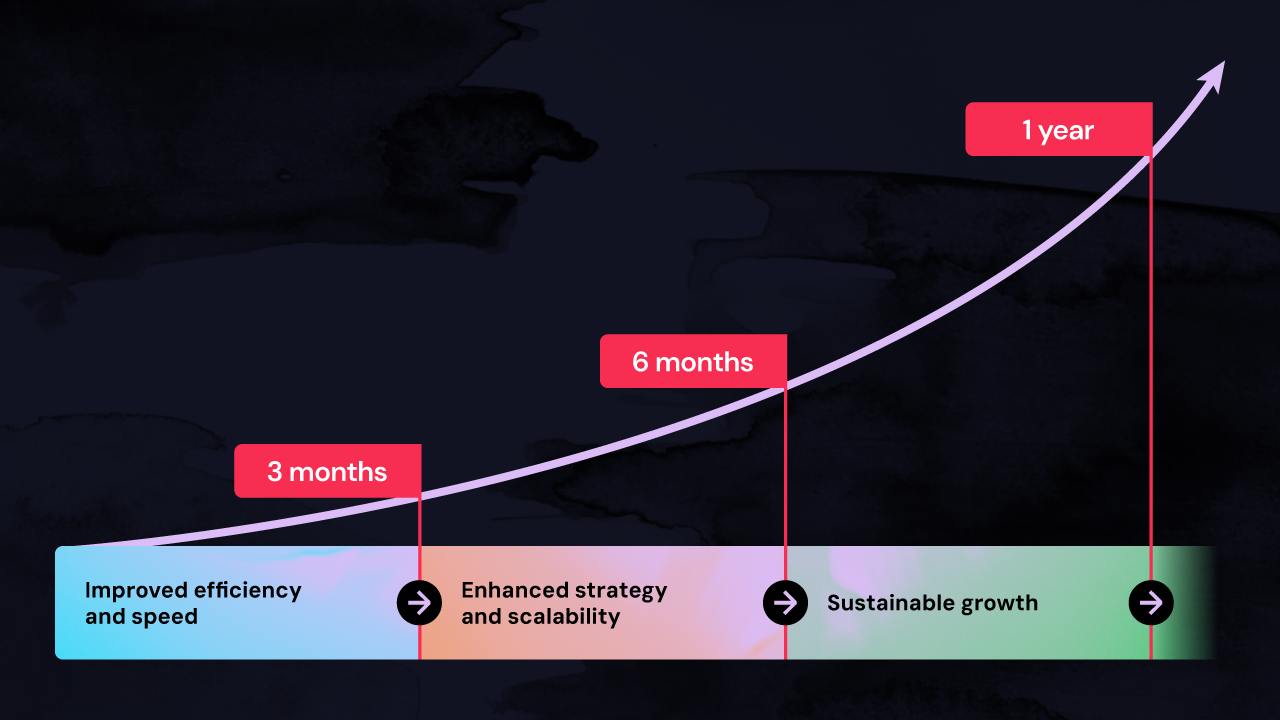Localized advertising is becoming increasingly complex. Ad strategists spend their days managing complex budgets for multiple national, regional, and hyper-localized accounts. They must painstakingly bridge the gap between brand-level campaigns with regional and local content, creatives, and offers. Plus, ad teams must continuously ensure brand consistency across locations. These manual tasks leave little (or no) room for identifying and implementing optimizations.
With the right automation tools, ad strategists can efficiently scale multi-location advertising campaigns that adhere to national brand messaging and campaigns while resonating with local audiences.
The key is applying automation that addresses the four most time-consuming and challenging workstreams that multi-location advertisers face. Let's explore them, along with key current and emerging best practices.
Four ways to use automation for multi-location advertising
Multifaceted customization at scale
One of the primary advantages of automation is its ability to facilitate customization at scale. This functionality is vital for multi-location advertisers because it enables you to personalize campaigns, ad sets, and even ads for local markets quickly and accurately.
Automation makes it possible to effortlessly create and launch location-specific campaigns. For digital advertisers, this significantly reduces ad and campaign setup time.
Instead of spending days on campaign preparations—then spending hours or days copying and pasting your teams' hard work into each ad channel—automation empowers companies to launch new location-specific campaigns with a little QA at the click of a button. Rather than wasting hours on tedious copy-pasting, teams reclaim time for strategic planning and optimization ideation.
Automated solutions can also be used to customize specific elements of your campaign, like display creative or copy. This level of customization ensures local relevance, driving enhanced engagement and conversion rates from your targeted audiences.
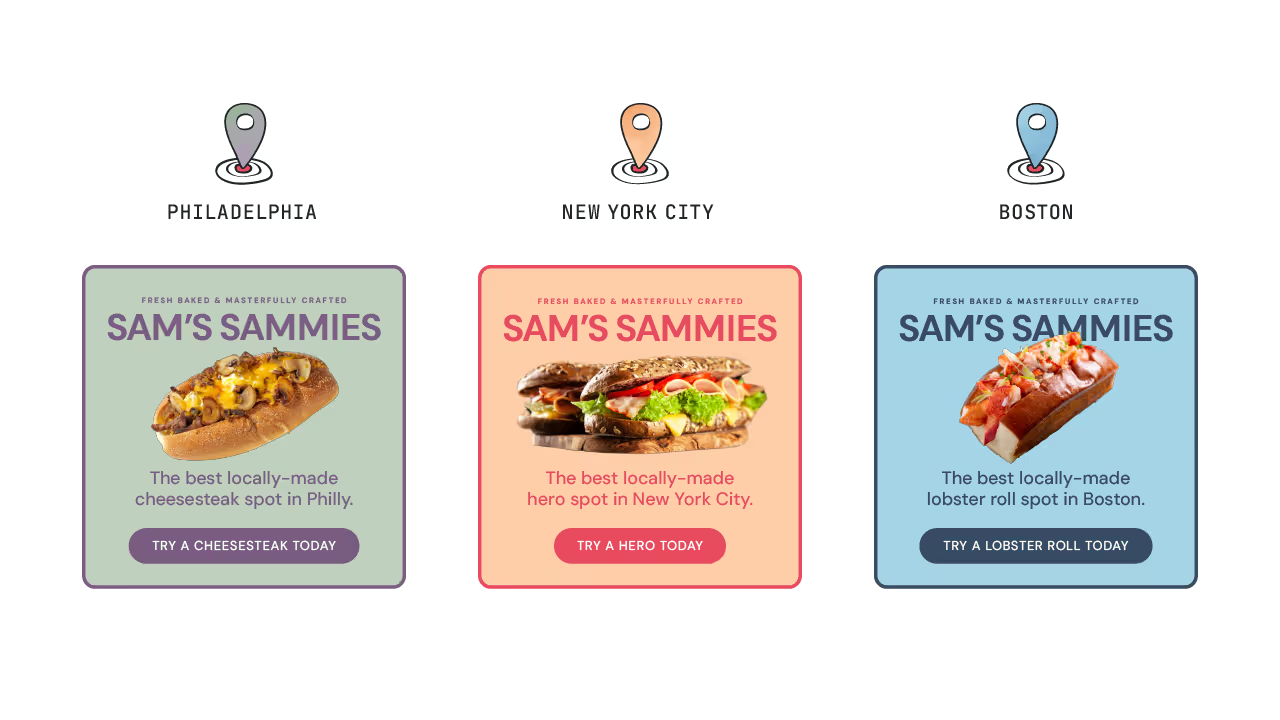
One of our agency clients, CyberMark, used Fluency to effectively generate customized ad copy tailored for every location they were managing. These customization efforts significantly boosted campaign performance, driving an 80% conversion increase for one of their key clients.
The CyberMark team was also excited by how automation significantly improved their operational workflows. The team reduced the set-up and execution time for each campaign from 10 hours to two hours: essentially giving them back an entire workday!
"Transitioning to Fluency has transformed our manual, time-consuming processes into efficient strategies, enabling us to serve more locations and scale brands effectively," said Brittany West, Sr. Director of Marketing Services at CyberMark.
This dramatic uptake in engagement showcased the clear benefits of automation: CyberMark's teams could deliver personalized advertising to localized audiences while saving time and reducing effort.
Centralized budget management and optimization
Another benefit of digital advertising automation is centralizing budget management, reporting, and optimization. A "one platform" streamlined approach grants teams countless efficiency and budgeting improvements.
For example, let's say you're managing 20 regional campaigns for a national fast-food chain. Some of the locations are running promotions at the start of the month and some are running promotions at the end of the month. Others aren't running any promotions at all but still need to maintain relevance.
With automation, you can assign different pacing strategies to different locations. This ensures that ads are adequately pushed when promotions are live. Automating budget pacing strategies puts the "strategy" work back into the hands of humans. These tools remove the grunt work of managing each location's budget on a daily (or, let's face it, weekly) basis.
Most importantly, teams can manage countless budgets simultaneously without the risk of overspending. Smart automation budgeting tools can automatically pause campaigns (and notify you) when a budget is exhausted. There's no need to make the client dreaded call to tell them you accidentally went over budget at the end of the month or meticulously check every account as the end of the month approaches.
Automation tools free up your time and put the strategic spending levers back in your hands. Teams can allocate resources effectively across different campaigns and make swift adjustments based on shifting dynamics in various regions.
Optimizing performance for every location
Local data is vital for optimizing performance in targeted campaigns. Automation empowers businesses to analyze these local insights to tailor campaigns that cater to each location's unique needs, delivering better results.
Automation also makes it easier to quickly respond to AI-driven recommendations. For instance, Fluency's tools make keyword recommendations based on search queries tied to high-performing keywords. Ad strategists can quickly and easily make campaign changes within the system to jump on these opportunities.
Sometimes, optimization means doing less, not more. Fluency also recommends removing underperforming keywords to ensure your budget is used efficiently across geographies or accounts.
Localized audience data also plays a pivotal role in optimization. For instance, CyberMark used data analytics to scrutinize regional consumer behavior. This enabled the team to identify trends that informed their advertising strategies.
These hyper-localized insights not only helped refine targeting but also amplified the effectiveness of their multi-location campaigns. CyberMark incorporated these findings into a strategy refresh for a multi-location beauty brand with over 100 locations. The results were astounding: a 33% average increase in conversion rates!
Comprehensive and automated reporting
Think about everything that goes into building a typical report. You often need to access multiple systems, update any necessary rules or filters, verify that the data is clean and usable, and then move it over to a different system to start analyzing and understanding it. This is all before you even build the report, let alone analyze it for valuable insights!
You know the necessary steps required to source, build, analyze, and distribute the report. So why does it take so long to do every time?
Few examples highlight automation's advantages as succinctly as report-building workflows. Automation enables you to pull in real-time data across accounts, regions, campaigns, and ad sets with just a few clicks. You can also build custom, automated report workflows that send the most vital information to different stakeholders at recurring cadences, all without any additional effort. These tools save you time and reduce the likelihood of errors, all while reporting on the most up-to-date information.
Advanced reporting tools can also extract actionable insights, making it easier for you and your teams to use reports for decision-making and improved ROI. Teams can also receive alerts around items that require their attention or additional actions.
This is automation at its finest. Automation tools can handle report building, analyzing, and distribution for even the most complex multi-location advertising strategies. In turn, your teams can scale campaigns and results across multiple locations with ease.
On the Horizon: The Future of Automation for Multi-Location Advertising
Multi-location advertising is poised for growth, supported by the continuous evolution of automation technologies. Predictive analytics and hyper-personalization capabilities are transforming how brands engage their audiences on a local level. In turn, teams can drive more successful advertising strategies with less effort.
Predictive Analytics for Local Market Trends
Predictive analytics is instrumental in helping businesses anticipate local market trends. By analyzing historical data alongside current trends, companies can spark audience interest. Improved relevance and timing are excellent ways to narrow in on what matters to your buyers.
Hyper-Personalization Capabilities
Hyper-personalization pushes the boundaries of ad customization, allowing businesses to deliver ultra-targeted campaigns that resonate deeply with audiences. Increased personalization has proven to enhance engagement and significantly boost conversion rates.
Using Automation for Global Reach and Local Impact
Automation is revolutionizing how businesses manage multi-location advertising campaigns. This powerful technology is a critical driver of efficiency and effectiveness for advertising operations.
Somewhat paradoxically, automation ensures compliance with global brand standards while also opening the door for improved local audience customizations. For example, by automating tasks like ad localization and translation, you can easily reach international audiences without the hassle of manual translation or potential errors in messaging. This not only increases engagement but also builds trust and loyalty with customers.
Most importantly, automation also puts the "strategy" back into the hands of ad strategists. With automation handling repetitive, time-consuming tasks, your human workforce regains the capacity to create, launch, and optimize campaigns faster. Energy saved on these monotonous (but important) tasks frees you up to do fun, strategic work. You'll have time back in your day to improve performance for every unique location you manage, driving better results across the board.

